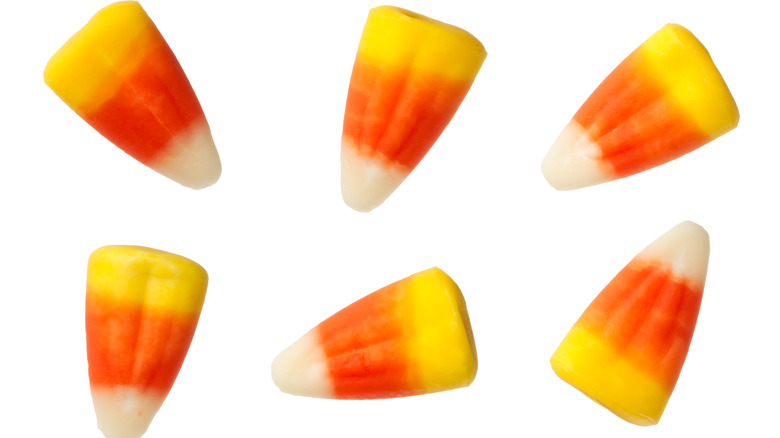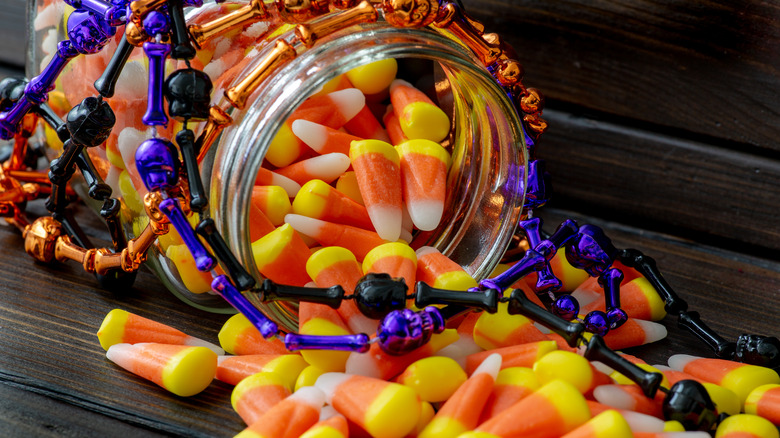The Possible Reason Candy Corn Is So Divisive
In the 2003 film, "Elf," Will Ferrell's character Buddy proclaims that Santa's elves, "try to stick to the four main food groups: candy, candy canes, candy corns, and syrup." In reality, it's only these mythical beings that could be in agreement on the importance of consuming candy corn. This iconic Halloween confection is a polarizing topic.
USA Today proclaims that 35 million pounds of the sweet are produced every year, with fans of candy corn cheering, and critics scratching their heads wondering who in their right mind eats the stuff. Introduced in the 1880s, candy corn's popularity began to take off in 1898 when the Goelitz Candy Company (the Jelly Bean Candy Company today) marketed the candy as "chicken feed" and offered it year-round as an inexpensive "penny candy." It wasn't until the 1950's when Halloween became associated with candy offerings that candy corn became a treat associated with autumn, per History.
Business Insider notes that candy corn is made of sugar, corn syrup, confectioner's glaze, salt, dextrose, gelatin, sesame oil, artificial flavor, honey, several food dyes, and gelatin. Not exactly healthy food, despite the fact that it looks like a veggie. But fans don't care. In fact, when a candy corn hater states their opinion to a candy corn lover, get ready for voices and tempers to rise. The two just can't understand each other. So, what gives? Turns out this difference of opinion could come down to science, after all.
Food fight
Candy corn advocates call the treat sweet and nostalgic, tasting of marshmallows and vanilla. Those who disagree criticize passionately. Yahoo notes that some haters liken the candy to "ear wax that looks like a rotten tooth," "...like eating a scented candle," and having the texture of crayons. Food flavor specialist Marie Wright told Today that nostalgia or childhood memories makes a big impact on the way people eat and enjoy food. She notes that people store memories in the same part of the brain that processes smell (and therefore taste), and so those who grew up eating candy corn as kids on Halloween feel sentimental about the candy as adults.
Most people who disagree feel the candy is way too sweet, and this, Today notes, could be as simple as a lack of an ingredient. Most candies contain acid, which produces saliva and makes food tastier. The lack of acid could account for candy corn's extreme sugar flavor. Love it or hate it, it appears candy corn isn't going anywhere. It has become so synonymous with the fall season that even companies like Oreo and M&M's have incorporated candy corn flavorings into their own confections. Apparently, candy corn is also expanding its seasonality. Always a Treat notes it makes an appearance now several times throughout the year in different colors, and in flavors like peppermint and pumpkin spice.

